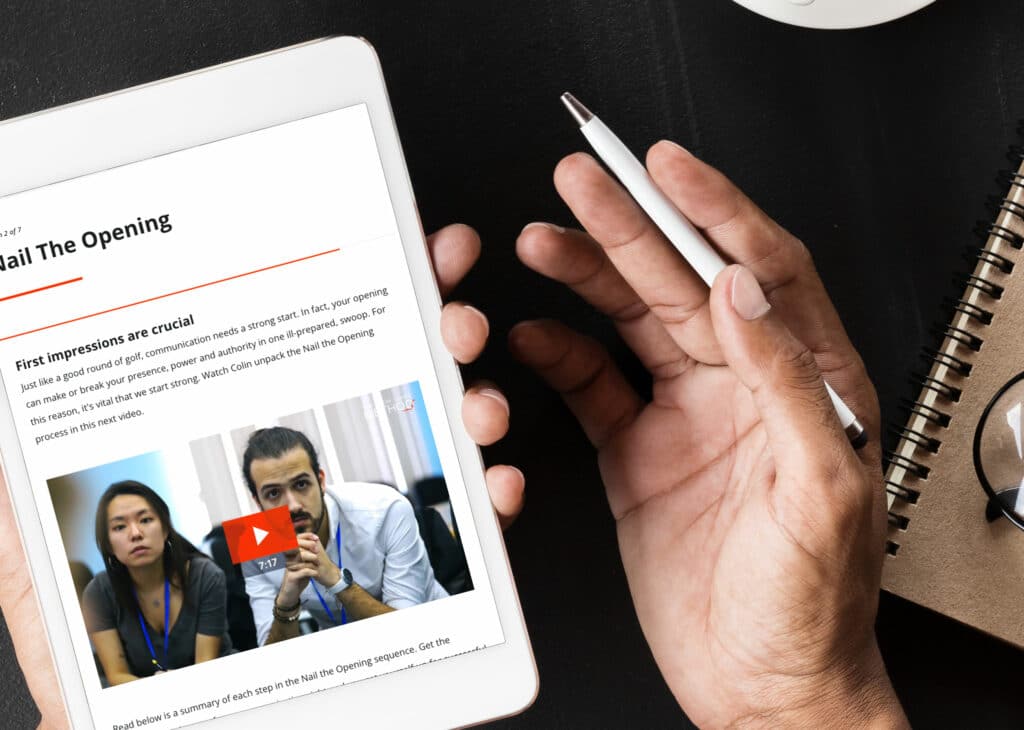The tone of your pitch, in perfect harmony or discord, is set through the final note. Your Q&A is where the audience and investors will voice their doubts and is likely where you’ll struggle most. It’s impossible to anticipate every question so you’ll need to think on your feet without becoming defensive or flustered. It’s vital to be mindful that your body language and tone don’t slip under pressure.
Pitch practice
Pitching new business is like any other skill, as everyone knows and has repeated ad infinitum, practice makes perfect. But how do you practice something spontaneous? How can you prepare to address the wide range of possible questions that could pop up?
It’s nice to feel validated by practicing with friends, spouses or parents who’ll be in awe regardless of what you say. But working in this narrow comfort zone will not prepare you for the challenge ahead. Choose a variety of people, including those that disagree and will throw back harsh retorts. Call on all those attention-to-detail perfectionists in your life and let ‘em rip. They’ll hack the idea and stress test it. Luckily they’re not the ones funding your idea and you can afford to make some mistakes. The goal at this point is to uncover the holes in your argument and fill them! You can also anticipate and prepare a list of questions to cover the bases of the pitch.
Thinking time
“That is a good question”, “great question over there, thank you”, “excellent question!”.
Is every question really that good? Your audience don’t need praise, you do. Instead of buying time with filler responses, go straight to the killer. You’re short on time and fluffing about with words distracts from the message.
Another mistake to buy time is repeating the question, a better tactic is to paraphrase and soften any hostility using careful wording. It’s okay to pause for a few moments to gather your thoughts and speak with intention.
By contrast, if Jiminy Cricket is visiting after you’ve finished speaking, you need to engage the audience and encourage them to speak up. Having some debate after your pitch demonstrates how the idea withstands criticism. Download our cheat sheet for simple tips on increasing involvement and taking charge of discussion.
Position yourself
Change your body language when responding. Your positioning will be different when listening to questions and when you deliver. The right body language will send a strong message to your audience and also your hormones. Take the thinker pose for a few moments but don’t stay as still as the original bronze statue. This will demonstrate to your audience that you’re considering their idea.
Watch your audience
Q&A is limited and the more questions you can address the better. One strategy for timing and efficiency is to scan the audience quickly while each question is asked. If you see multiple people nodding in agreement who clearly share the concern you know it’s relevant. By contrast, if there is little response the concern may be a smaller detail. Dedicate time accordingly, this way you can convince the majority. Another time management strategy is identifying the most significant people in the room for your pitch and choosing more questions from them.
Regardless of who you ask, always make eye contact with the person asking the question while you answer to build a good relationship with the audience. It may be tempting to look towards the more influential players but you risk offending the audience by brushing over them.
Pitch on a high note
Finishing with “so… are there more questions?… no, okay thank you”, does little to enforce your authority and message. Instead, prepare a few concluding statements to reinforce your idea. Once the audience are engaged and leaning forwards, Oren Klaff recommends pulling back at the end of the pitch. This will demonstrate that you are not needy, as it exerts your power.
With so many “dos” and “don’ts” to absorb and adopt, it’s hard to hit the right notes. Our cheat sheet provides some helpful tips to pitching to stakeholder and clients so you’ll be ready to prepare a punchy pitch.

The Colin James Method® Facilitators train corporate executives to improve their leadership skills with a proven methodology. Our highly trained Facilitators and Coaches are recognised for their experience in their fields and have worked with many individuals and organisations around the world to master the art of communication.











